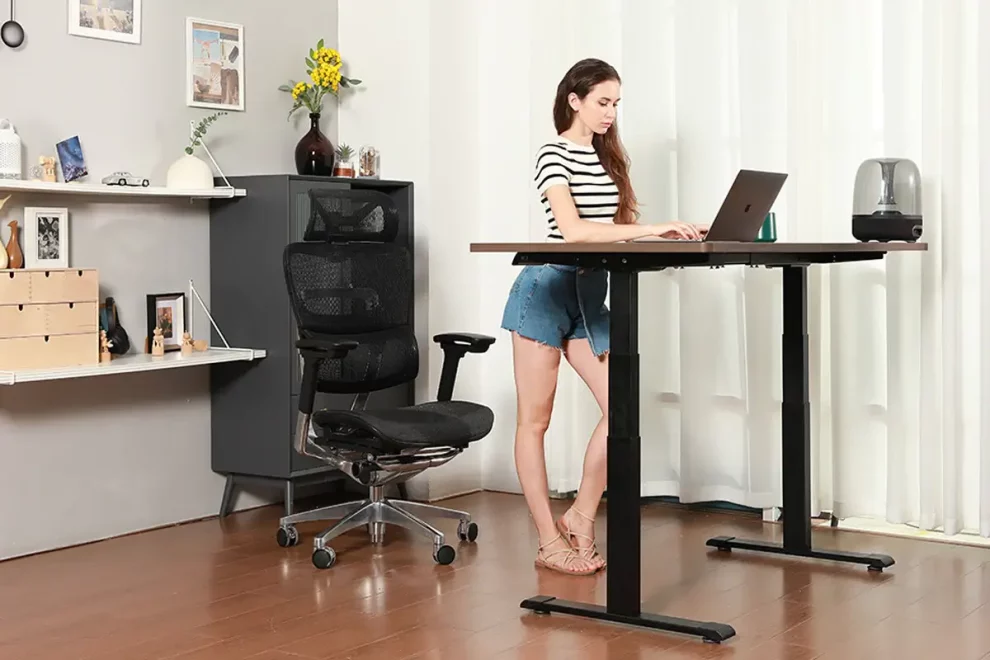In an era marked by technology-driven workspaces, an overwhelming majority of individuals find themselves anchored to their desks for extended durations. The criticality of maintaining an optimal posture and ensuring the utmost comfort at the workplace has significantly increased. In this context, integrating an ergonomic office chair into the workspace is an indispensable factor. These chairs, meticulously designed to foster better posture, significantly alleviate physical stress, thereby playing an instrumental role in preventing workplace injuries. This comprehensive article aims to shed light on the multifaceted importance of ergonomic chairs in mitigating injuries and fostering overall well-being within the office environment.
Table of Contents
Posture Support
Ergonomic office chairs, with their state-of-the-art design, cater to a wide range of body shapes and sizes. They come equipped with adjustable settings that can be tweaked to meet every individual’s unique requirements. Ergonomic chairs play a pivotal role in supporting the natural curvature of the spine, thereby substantially reducing the potential risk of back ailments over a prolonged period. By providing optimal lumbar and pelvic support, these chairs maintain the back in a healthy, upright position, significantly reducing the propensity to slouch and subsequently mitigating the strain on spinal ligaments.
Reduced Risk of Neck Problems
Traditional office chairs often lack sufficient support for the neck and head, a feature that ergonomic chairs deftly address. Ergonomic chairs generally come equipped with a headrest, providing much-needed support to the neck and head during prolonged work periods. This feature proves particularly beneficial for individuals whose work involves tasks that could potentially strain the neck, such as incessant typing or frequent answering of phone calls.
Optimal Hip and Thigh Comfort
The seat of an ergonomic office chair is typically designed with sufficient width and depth to accommodate any user comfortably. An ideal seat design incorporates a waterfall edge, a feature that significantly reduces pressure on the back of the thighs. This innovative design enhances blood circulation and concurrently reduces the risk of numbness and muscle fatigue, thus contributing to comfort and productivity.
Adjustable Features for Custom Comfort
An ergonomic chair’s plethora of adjustable features, including adjustable seat height, backrest, and armrests, paves the way for a highly personalized seating experience. These adjustable elements empower users to modify the chair according to their preferred comfort level, promoting better posture and effectively minimizing strain on specific body parts, including the wrists and shoulders.
Increased Productivity
While the principal function of an adjustable workplace chair is to foster good posture and avert injuries, the comfort it provides significantly contributes to increased productivity. Employees who are comfortable in their seating arrangement are less prone to discomfort-related distractions. As a result, they can concentrate better on their tasks, thereby leading to improved efficiency and higher output.
Long-Term Health Benefits
The regular usage of ergonomic chairs can lead to substantial long-term health benefits. By actively promoting proper posture, reducing the strain resulting from repetitive tasks, and alleviating back pain, these chairs significantly mitigate the risk of a multitude of musculoskeletal problems often associated with prolonged periods of sitting.
Cost-Effective Solution
While the initial cost of posture-friendly workplace chairs might be higher compared to traditional office chairs, they emerge as a cost-effective solution in the long run. By substantially minimizing workplace injuries and the associated health issues, these chairs effectively reduce the costs linked with lost productivity and workers’ compensation.
Conclusion
In today’s work culture, where prolonged sitting is common, investing in an ergonomic office chair is a proactive step towards promoting better health and preventing workplace injuries. Beyond just comfort, these chairs offer essential support for the body’s key areas, facilitating proper posture and reducing the risk of musculoskeletal problems. Therefore, the value of an ergonomic chair extends far beyond its initial cost, contributing to healthier employees, a more productive work environment, and a reduction in long-term medical expenses.




Add Comment